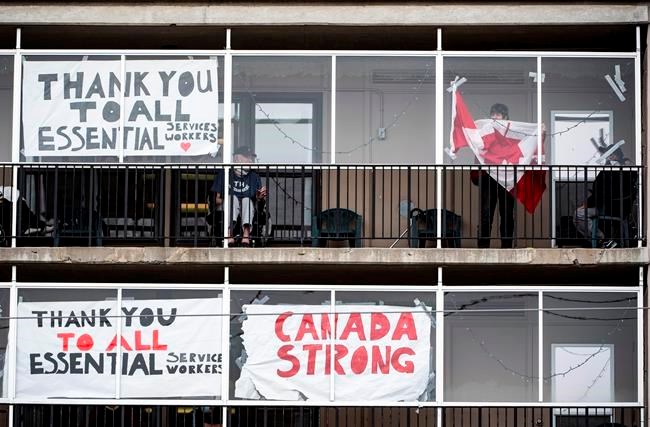OTTAWA — Residents of Canada's two largest provinces are expected to learn this week what the path to a new normal might look like when the governments of Ontario and Quebec unveil their initial plans for reopening their locked-down economies.
Sunday saw warnings about raising unrealistic expectations as public-health officials across the country reported more than 1,200 new cases of COVID-19 and at least 95 additional deaths. Ontario, meanwhile, announced schools would remain closed through the end of May.
There was nonetheless a palpable sense of expectation as Sunday marked a rare day in which federal and provincial leaders remained largely out of the spotlight ahead of what is likely to be a significant week for the country.
Ontario Premier Doug Ford is planning early in the week to unveil a framework for reopening the province's economy, which has been shuttered since mid March because of COVID-19. Quebec Premier Francois Legault is also expected to reveal his own timeline for reopening his province.
The two provinces, which have the most COVID-19 cases in Canada, will be the latest to lay out some details for easing their own lockdowns after Saskatchewan, Prince Edward Island and New Brunswick announced tentative timelines for a return to some semblance of normal last week.
Yet that path, in Ontario at least, won't be quick. Ontario Education Minister Stephen Lecce announced Sunday that publicly-funded schools will remain closed until May 31, adding the closure could be extended if recommended by public health officials.
"The commitment I can make to parents today is to ensure safety guides our decisions," Lecce said. "We will never compromise the safety of your child, knowing how important it is to make sure that our youngsters, the most vulnerable in our country, remain safe."
Ford, who on Saturday criticized demonstrators outside the Ontario legislature as "yahoos" for disobeying physical-distancing laws and calling for an immediate end to the lockdown, has previously said any reopening will be done in stages to prevent a resurgence of COVID-19.
Prime Minister Justin Trudeau, who talked to the premiers on Friday about their recovery strategies, has previously stressed that none of the plans hinge on people being immune to catching COVID-19 twice.
David Fisman, an expert on infectious diseases at the University of Toronto, said the proper approach should be compared to using a dimmer switch instead of a light switch that only turns on and off.
"We can't just flick distancing on and off," Fisman said in a Twitter thread on Sunday. "But economically and psychologically, we have to figure out what we can restart and what we can't."
Fisman added businesses and services that don't require large gatherings could be re-opened safely, if they follow the same rules used by essential businesses.
Parks and green spaces could also be re-opened to access, he said.
Federal opposition parties were similarly looking toward the future on Sunday.
During a news conference in Ottawa, Conservative finance critic Pierre Poilievre demanded the government obtain enough protective equipment to help provinces re-open their economies.
Yet even as he underscored the need for the Canadian economy to eventually return to "investment-fuelled production rather than debt-fuelled consumption," Poilievre called on Ottawa to make sure businesses aren't cut off from federal support if they re-open partially, but not fully.
"If businesses open in Saskatchewan, but the government of Canada tells them they can't open and start attracting revenue or they'll lose their rental subsidy, then many businesses will effectively be banned for financial rather than public health reasons from going forward and working."
Federal New Democrats, meanwhile, are launching an effort to identify areas in which the economy should change after COVID-19. The party says the process will include consultations with experts such as entrepreneur Jim Balsillie and former parliamentary budget officer Kevin Page.
The party's hope is to leverage its influence in the current minority Parliament and some of the harsh realities of the current crisis to advance certain economic and social reforms.
"What's really becoming clear is that we're going to need a plan to restore the economy and to move towards a new normal," said NDP MP Charlie Angus, who is leading the task force.
"One of the fundamental realities of getting out of this crisis is that the market is not going to simply carry on. It's going to require a massive public investment. ... So that necessitates a conversation around what kinds of public investments and who is it going to benefit?"
This report by The Canadian Press was first published April 26, 2020.
Lee Berthiaume, The Canadian Press

